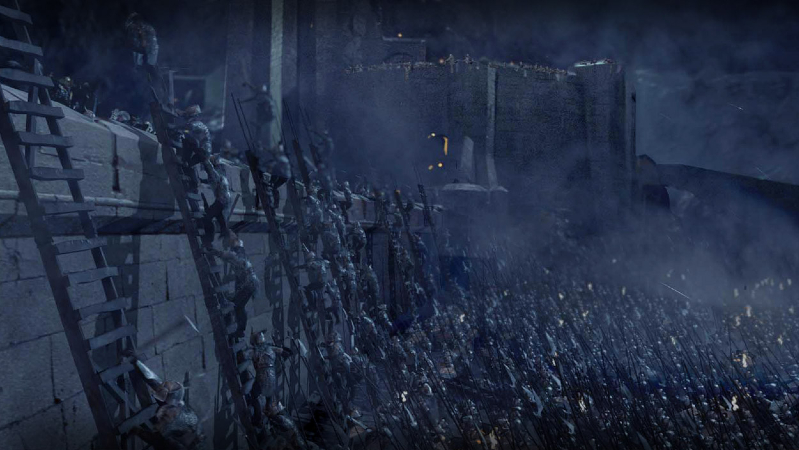Director – Peter Jackson – 2003 (2002) – New Zealand – Cert. 12a – 225m
*****
(NB Extended Edition, in cinemas from Monday, July 27th 2020, 235m in cinemas due to extended frame rate = 225m version released on DVD 2004. Original theatrical cut: 199m)
This always had the problem that it’s the second film in a trilogy. If you think you might want to watch all three, you’ll watch the first movie. If you want to see how the story ends up, you might possibly jump straight in at the last movie (although to be honest, you’d be better watching the first movie The Lord of the Rings: The Fellowship of the Ring and then if you like it the other two as well.)

That said, both this second movie The Lord of the Rings: The Two Towers and the third film The Lord of the Rings: The Return of the King deal with the problem of opening the film admirably, in both cases doing so in creative ways. This one leaps back to Gandalf being dragged down a chasm by a Balrog in FOTR and then, once we think we’re getting closer to finding out what happened, has Frodo waken from a dream.
Thereafter, like the Fellowship from FOTR, the movie splits into three parallel plot strands.
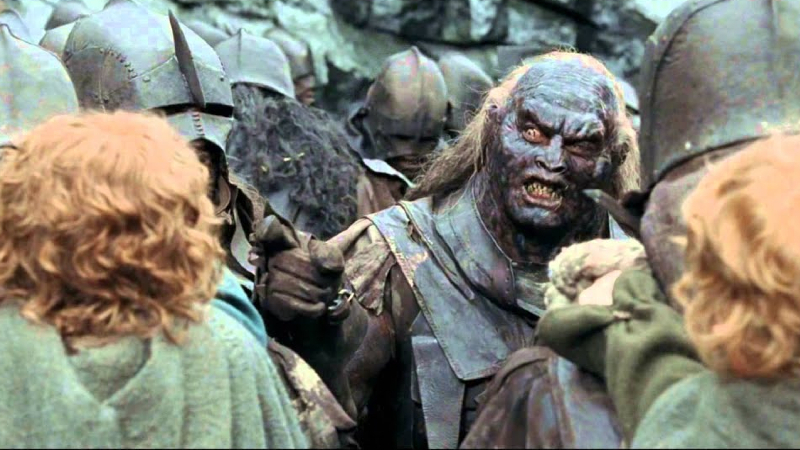
In the first, hobbits Merry (Dominic Monaghan) and Pippin (Billy Boyd), having been kidnapped by Saruman’s Uruk-hai fighters, escape into the vast forest of Fangorn and meet up with the Ents (tree shepherds), specifically Treebeard (voice: John Rhys-Davies, who also plays Gimli). This strand of the plot is mostly light and humourous with events happening pretty slowly once we get to the forest.
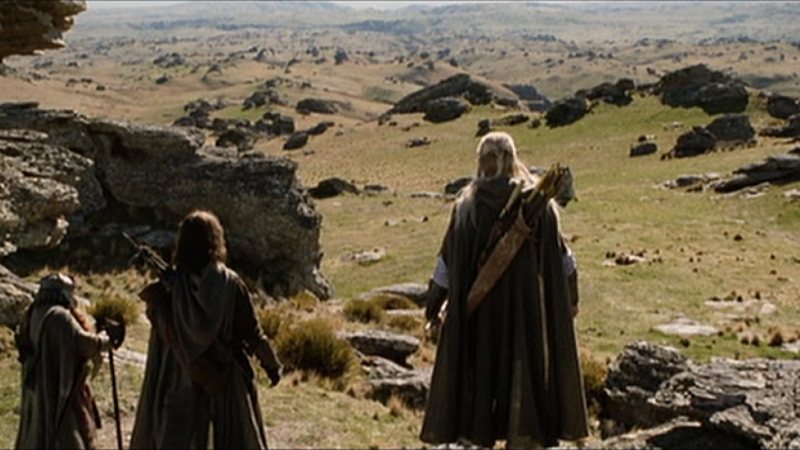
Aragorn the human, Legolas the elf and Glimli the dwarf continue to track the two kidnapped hobbits but find themselves in Rohan, a human kingdom under siege from Saruman first psychologically and later militarily. A terrific early sequence features the Riders (horsemen) of Rohan, led by the valiant Éomer (Karl Urban), under attack by Saruman’s wargs (basically, giant wolves).
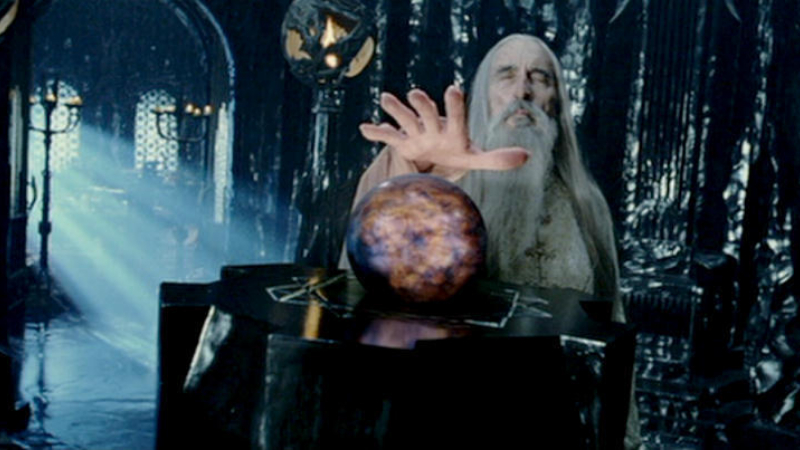
Much of the Rohan material could be a standalone Middle-earth story in itself. King Theoden (Bernard Hill) is in the grip of enchantment and subject to the whim of untrustworthy advisor Grimer Wormtongue (Brad Dourif), a Saruman acolyte.
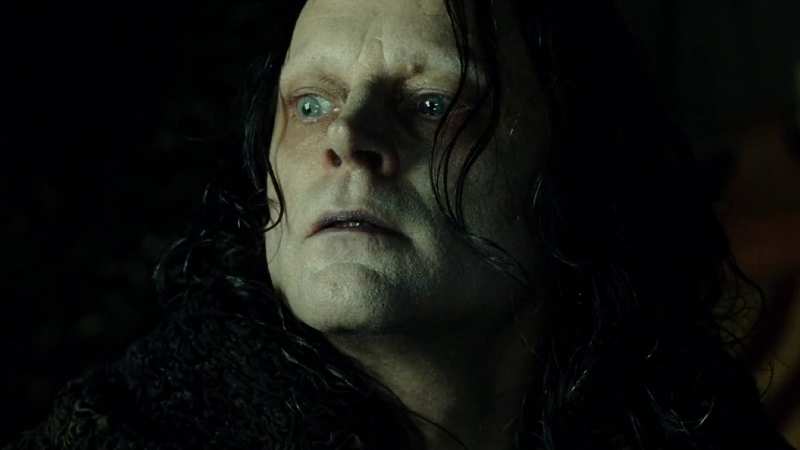
Eventually, the people of Rohan barricade themselves in to Helm’s Deep to fight off Saruman’s Uruk-hai army, complete with Oliphaunts in a sprawling battle sequence that dwarfs anything in the first film in terms of scale. There’s more of this sort of thing in the third film. It just about works, but this love of big extended battle scenes was to prove Jackson’s downfall in parts of his The Hobbit trilogy where the battles got bigger and longer. Here, though, they’re just about manageable.
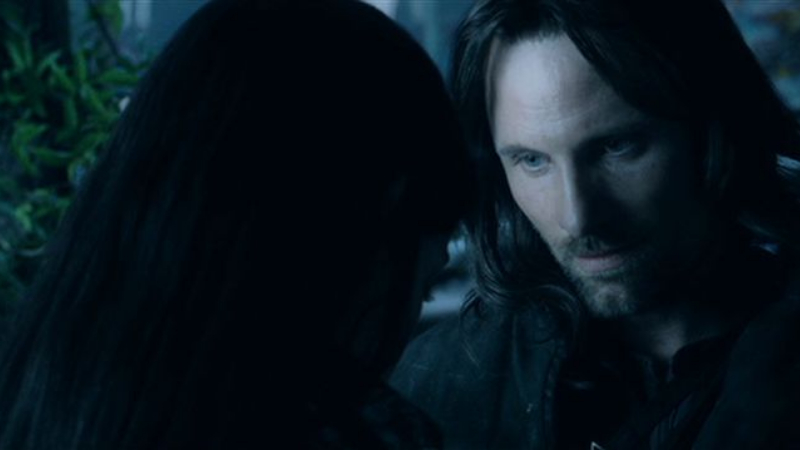
There is also a love interest from Aragorn in the form of Éowyn (Miranda Otto), forced to stay behind as a woman, although she’d much rather be out with a sword fighting alongside the men. This is unrequited since Aragorn is in love with the elf Arwen (Liv Tyler) who is herself torn between departing for the West with her fellow elves and staying behind to love Aragorn knowing she will ultimately outlive him for thousands of years in a Middle-earth bereft of her own kind.
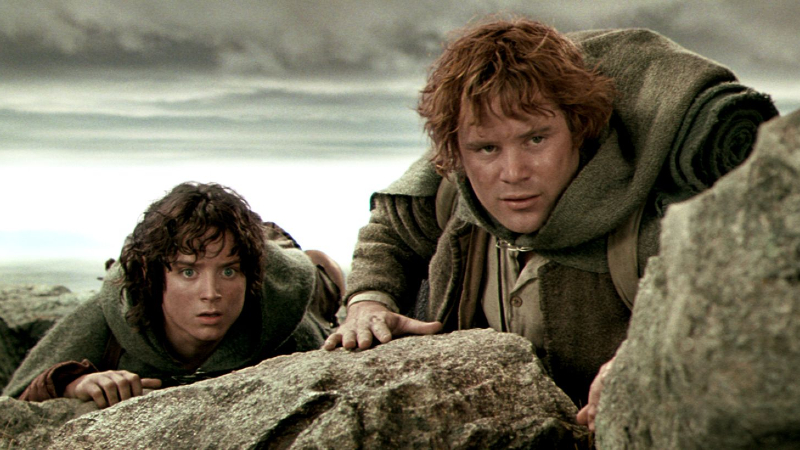
In the third, Frodo and Sam continue with their quest towards Mordor, where they are to unmake the One Ring in the fires of Mount Doom. They are joined by the treacherous Gollum (Andy Serkis) whose motives are highly suspect.
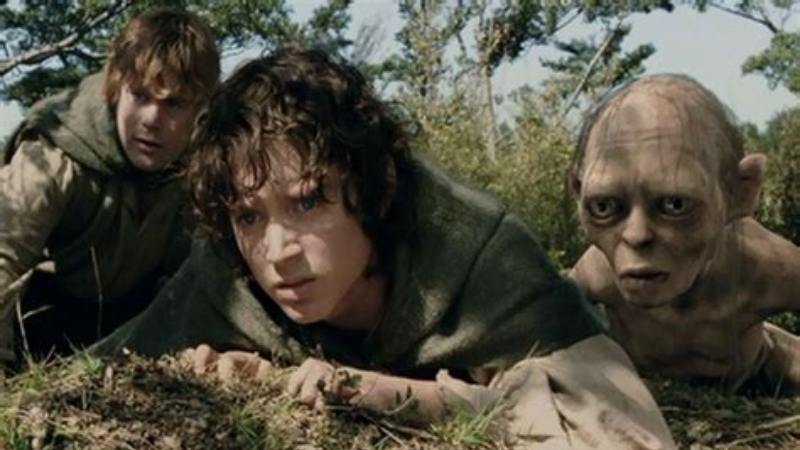
Gollum is the trilogy’s great asset, a mixture of a striking performance by actor Serkis and special effects built on motion capture, whereby an actor can convincingly perform inside what is in effect a digital puppet. The script cleverly explores the interplay with Frodo as he grows psychologically weaker the longer he wears the ring on a thread round his neck, his long-suffering companion Sam whose exasperation with Gollum increases from scene to scene, and Gollum himself.

The creature Gollum is torn between two personalities: the Gollum who serves and reveres the “Precious” and his former self Smeagol who is struggling to know what the right thing is so he can do it. Frodo establishes a master and servant relationship, but servant Gollum / Smeagol knows the lie of the land better than the hobbits and as such acts as their guide through the Dead Marshes, towards the Black Gate and Mordor. Serkis’ performance (or dual performance) combined with the team of technicians responsible for realising Gollum / Smeagol is the most impressive element in the film. He has a great deal of screen time both in this film and in the subsequent ROTK.

In the end, it’s hard to think of this as anything other than the middle film in a trilogy. Which is fine – you wouldn’t want to skip it and go straight from FOTR to ROTK. It isn’t a film you’d ever want to sit down and watch alone, out of the trilogy context, however.
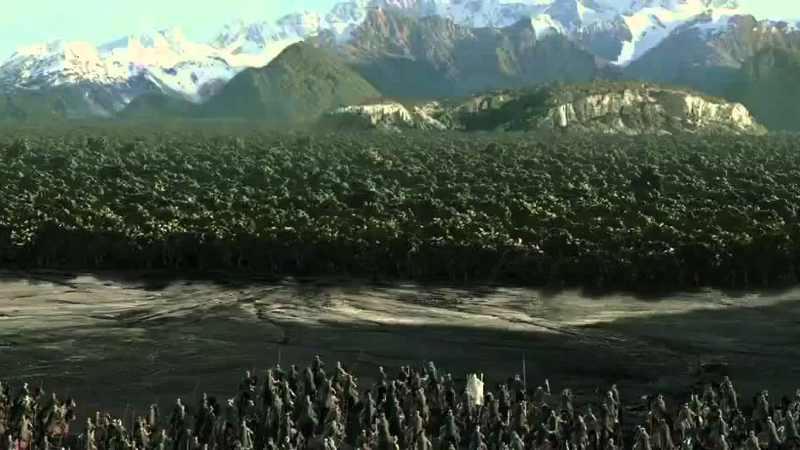
The extended version is a great improvement of the original theatrical cut, not least because it explains how the battle of Helm’s Deep ends. This explanation (one shot of Uruk-hai retreating into a forest where they are destroyed by Ents) is so brief that it’s a mystery as to why it was cut out before, but it was. This version of the film is all the better for that scene in particular being put back in.
The Lord of the Rings: The Two Towers (Extended Edition) is currently out in UK cinemas. Trailers here:
(Extended Edition DVD)
(Original theatrical version)
